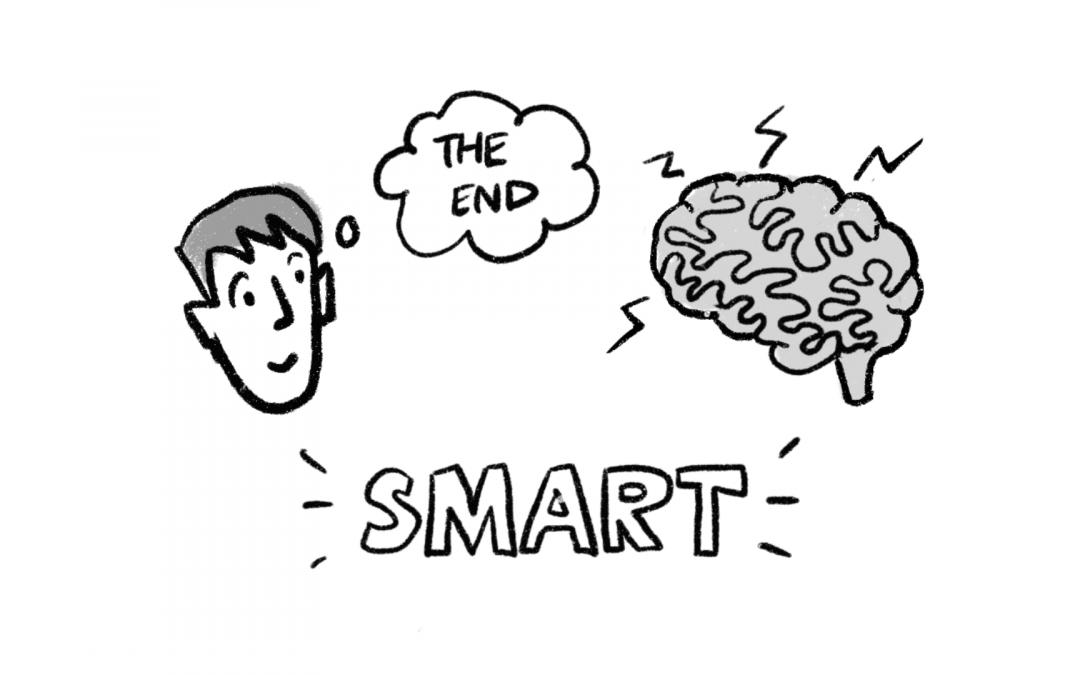Writing goals are important because they give you something to aim for. They give you the structure, direction and clarity you need to keep moving forwards with your project. However, the wrong goal can become a millstone that demotivates and leads to delay, and make writing feel overwhelming. Find out how to set the best goal for your writing.
Make it more than a wish
The first step towards setting a writing goal is to make sure that it is actually a goal rather than something else. Some writers say they have a goal when actually it’s more of a wish or a vague hope.
Having a dream to write sounds aspirational but in reality, it can be demoralising and demotivating if it remains a dream long term. But turning your woolly wish into something more concrete is simple. Take some wishes that writers sometimes have:
- I wish I could write a book
- I wish I could finish my projects rather than quit
- I wish I could develop a more regular writing practice
- I wish I could find more time to write
Now, replace ‘I wish I could’ with ‘I’d like to…’
Doesn’t this already feel more positive? Something to work with. Now you know you’d like do something, the next question is: how are you going to do it? And that’s where you need to think about writing goals.
>> Read more: Say it, write it, draw it – 8 visualising exercises for writers
Make your goal realistic
When it comes to goal setting, writers often get stuck in the weeds. Sometimes they feel overwhelmed by their goal whilst other times they worry that they’re not being ambitious enough. They compare their approach to others or to how they might have achieved a writing project in the past.
But goal setting – like all aspects of the writing process – is deeply personal. What’s achievable for one person might not be for another. What worked for you at one point in your life, might not work now – and vice versa.
The most important thing is to find a goal and an approach that works for you right now and not remain wedded to an approach that you’ve told yourself – or someone else has told you – that you should take.
“Having a dream to write sounds aspirational but in reality, it can be demoralising and demotivating if it remains a dream long term.”
Saying that, a good writing goal does have certain characteristics so when you’re setting one, try to follow some general principles. Psychologists call these optimum motivational goals – not too difficult, not too easy, just right. Goals that spur you on, but don’t overwhelm you – Goldilocks goals.
Getting SMART
When Charles Duhigg was writing the follow up to his bestselling book on habits, Smarter Faster Better: The Secrets of Being Productive, he said: “Writing a book is a big goal – too big, in many ways to grab the entirety of it at first.” To make progress he needed two kinds of aims:
- a stretch goal, something to spark ambition, and
- a SMART goal, to help form a concrete plan.
As his book was about sharing the secrets of productivity, it speaks volumes that he used SMART for his own writing. Most often used in workplaces, the acronym provides a simple yet effective structure to get a handle on your goal. Here’s what it stands for.
1. Specific: Vague goals lead to vague outcomes. Getting specific about your goal helps you to focus and define what you’ll do. ‘I’ll try to spend a bit of time on my writing this week’ is not a goal. ‘I’ll write three chapters by next Thursday’ is.
2. Measurable: You can’t manage what you can’t measure. If your goal is ‘I’ll write more over the next few weeks’ it’s impossible to know if you’ve ever achieved it. If your goal is ‘I’ll write 500 words more tomorrow’, you can.
3. Achievable: Over ambitious goals can lead to overwhelm and panic. Under-ambitious goals can lead to boredom, procrastination and delay. Find a balance that works for you. In short, it should stretch you but still remain possible.
4. Relevant: The goals should align with what you set out to achieve. It’s no good writing a poem a day if the overall objective is to publish a novel. Focus on the overall objective and what’s needed to achieve it to avoid distraction.
5. Timed: Without a time frame you’ll have no urgency to act. Deadlines aren’t always pleasant, but they give you something to commit to and work towards.
Double-checking your goal
Once you’ve set a writing goal now ask yourself how you feel about it. Here’s three options. Does it feel:
- Overwhelming and daunting?
- Like it will be a walk in the park?
- Exciting, challenging but also achievable?
If you chose 1. it’s likely that you’ll never start because over-ambitious goals can lead to procrastination – try to make your goal smaller. It’s great to be ambitious but little point if it results in inaction.
If you chose 2. it’s likely you’ll switch off before you’ve finished – push yourself a little more.
If you chose 3. that’s about right. You’ve found what we call the tingle factor: a goal that’s a little bit challenging, but not so much that it feels daunting.
Prefer to watch us live? We’ve summed up our best tips on goal setting on our YouTube channel:
Executing your goal: project and practice
Once you’ve set a writing goal, you need to do the work. Your overall writing goal will comprise of two main elements: what you’re going to write (the project) and how you’re going to write it (the practice).
Consider the project and practice elements of your goal like being two sides of the same coin – when you adjust one, adjust the other.
Always remember that your goal is not fixed nor set in stone. Change it to suit where you are in your life – and your project. Some parts of the writing might require deep immersive periods of time whilst others can be done with distractions around. Choose the approach which fits with what you’re writing and when.
Be flexible with how you approach your goal and try not to compare your approach to anyone else’s – or how you might have written before. Productivity – and goal setting – are personal to you.
The project
Quite simply, the project is the thing you want to write. However, you won’t get far if you don’t approach your project in incremental chunks.
When you think about your project consider how you’re going to approach it. You don’t need to do this in a linear way but you will need to compartmentalise the project tasks in some way so you can grasp hold of them.
- Is your aim to get to a certain point in your project by a certain date?
- Do you want to want to divide your project into milestones?
- What element of the project will you tackle first? What’s the first step?
When you tick off milestones, this can make you feel like you’re making fast progress with your writing. It also gives you focus as you’re always thinking about the next stage in the writing process.
However, writing can be a moveable feast so sometimes it’s difficult to know when you’ve achieved a certain milestone. What does ‘completed’ mean? So, always try to be as specific as you can be.
The practice
Developing and experimenting with how you write your project – your practice – is just as important as what you write.
Targets and frequencies
Your practice goal is built from targets and frequencies – how much you’ll aim to write, how often. Think about whether you want to reach a specific stage or milestone, keep to a specific word-count per session or write for a specific amount or time. For example:
- I’ll write for one hour a day in two bursts of 30 minutes, one before breakfast, another when I finish work.
- I’ll write one paragraph each day between 9am and 11am.
- I’ll write 500 words of my introduction in the morning on Mondays, Wednesdays and Fridays.
Make your goal as specific as you can.
- How long is a single writing session?
- How frequent will your sessions be?
- What will you aim to achieve in each session?
- When (and between what) will you fit your session in to your day?
When you’re thinking about your practice, make sure you’re realistic about what you can achieve. Don’t think about what you feel you should be able to achieve, think about what you can. Stretch goals are great but they can be demotivating if you don’t meet them.
Start small rather than go big. Remember that you can always exceed your goal if you’re on a roll. This is great for building motivation and developing a routine.
Be cautious of making your goal too monotonous or dry. A goal to ‘write for 30 minutes a day’ can suck the creativity and fun out of writing so make sure you mix up your approaches.
Lastly, always make sure you know where you are in the writing process. Have regular check ins to make sure you’re progressing in the right direction.
>> Read more: A guide to tracking your writing – why noticing how you write will transform your practice
The just-getting-into-the-swing approach
Some approaches to writing aren’t about writing at all, they’re just about familiarising yourself with writing again and getting back into the groove.
This approach is particularly helpful if you’re starting out or if you feel blocked. It’s all about easing you in to the writing process and creating a pattern of persistence that builds your confidence. Examples are:
- Show up at your desk once a day at a set time and even if you don’t do any writing – reserve that time solely for writing and nothing else.
- Write for 10-15 minutes each day and slowly increase the time the over the course of two weeks.
- Produce a piece of freewriting every day (an unblocking technique where you splurge your thoughts without judging or editing).
- Write in a journal every morning or evening.
- Use the Pomodoro Technique. Get yourself a timer find somewhere you can’t be interrupted, set it for 25 minutes. Write. Then, take a five-minute break. Set the timer for another 25 minutes.
Remember to make a brief note to reflect on how each session went and be careful not to get hooked on practice goals – they can be addictive!
Keep your steps small
As you progress towards your goal make sure each step feels manageable. Sometimes when you think of the large project you have to write it can feel overwhelming – and that results in procrastination. We often recommend that writers take a small steps approach where you progress in increments, only focused on the next small action you need to take, not the large scary project you have to achieve.
>> Read more: How small steps lead to great progress
Also, as you move towards your goal, be open to how you’ll reach it. Don’t aim for perfection. Your goal is a target to aim for – like the final destination of a journey – but how you get there can change. Some writers never start because in their minds, the route to their goal isn’t 100% perfect. But this is just another form of procrastination. Don’t use goal setting as an excuse for never starting
Make your goals bright
Goals often work best when they’re based around simple, transparent rules. For example, if your goal is to write on a Monday and Thursday after work or that you’ll always write on Saturday morning for two hours, it becomes very clear to you when you’ve missed that goal.
Psychologists have dubbed these ‘bright line’ goals and they work because they’re unambiguous. You know instantly when you’ve stepped over a bright line which reduces the amount of mental effort required to put the rule into practice.
If your goal changes every week or is too convoluted and complicated, this will cause your brain stress – something your brain wants to protect you from and so, reacts badly to. Having bright lines doesn’t mean that you can’t miss a session – your life will get in the way – they’re more about giving you mental clarity and building a routine.
“As you move towards your goal, be open to how you’ll reach it. Don’t aim for perfection. Your goal is a target to aim for – like the final destination of a journey – but how you get there can change.”
Prioritising goals
Very often, writers have multiple goals or tasks and this can mean that they find it hard to prioritise between different ones – where do I start? This can lead to procrastination and delay. A good way to prioritise is to rank or score your goals.
Every time you prioritise something you have to de-prioritise something else – that’s why prioritisation is hard. But ask yourself, if you could only choose one task to work on or one goal to focus on, which would it be?
Which one is so important to move your writing forwards that you’d have to do it first?
You can also give your goals a rating in terms of how difficult or easy they are. When you’re starting off it might be a good idea to ease yourself into the writing process by choosing an easier goal to tackle. But be cautious of putting off goals that are difficult – if you do this you’re letting procrastination to take hold.
>> Read more: Prioritize your writing – make writing matter and make it happen
Going forward, building momentum
Some goals will work for you and others won’t. Remember that productivity is personal. How you write will change over time depending on the other things going on in your life.
The key is to notice what types of goals work for you in what kinds of situations. After every writing session take a few brief minutes to note down what went well for you, what didn’t go so well and what you’d change for next time.
When you adapt and calibrate your approach as you progress – and never hold on to any goal-setting technique that doesn’t work – you’ll start to see patterns emerge, and when that happens, you’re on the way to designing a productivity system that works for you.
…
Originally published on on 26 September 2019, updated 22 January 2021.





